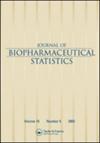评估锚定法中最小临床重要差异的偏差:模拟方法。
IF 1.2
4区 医学
Q4 PHARMACOLOGY & PHARMACY
引用次数: 0
摘要
基于锚点的方法已在临床研究中用于确定临床结果评估的最小临床重要差异(MCID)。然而,该方法的理论性质和鲁棒性尚未完全了解。我们进行了一项模拟研究,以探索基于锚点的方法在结果方差、安慰剂效应、锚点测量噪声和混淆值范围内的表现。我们的研究结果表明,相当大的安慰剂效应、锚点测量误差和混杂因素可能会对估计的MCID产生重大偏差。我们还讨论了识别和减轻这些偏见的策略。本文章由计算机程序翻译,如有差异,请以英文原文为准。
Evaluating bias in the anchor method for the minimal clinically important difference: a simulation approach.
Anchor based methods have been used in clinical studies to determine minimal clinically important differences (MCID) for clinical outcome assessments. However, the theoretical properties and robustness of the methodology are not fully understood. We conducted a simulation study to explore the performance of anchor-based methods across a range of values for outcome variance, placebo effects, anchor measurement noise, and confounding. Our results demonstrate that considerable placebo effects, anchor measurement error, and confounders may introduce a substantial bias into the estimated MCID. We also discuss strategies to identify and mitigate these biases.
求助全文
通过发布文献求助,成功后即可免费获取论文全文。
去求助
来源期刊

Journal of Biopharmaceutical Statistics
医学-统计学与概率论
CiteScore
2.50
自引率
18.20%
发文量
71
审稿时长
6-12 weeks
期刊介绍:
The Journal of Biopharmaceutical Statistics, a rapid publication journal, discusses quality applications of statistics in biopharmaceutical research and development. Now publishing six times per year, it includes expositions of statistical methodology with immediate applicability to biopharmaceutical research in the form of full-length and short manuscripts, review articles, selected/invited conference papers, short articles, and letters to the editor. Addressing timely and provocative topics important to the biostatistical profession, the journal covers:
Drug, device, and biological research and development;
Drug screening and drug design;
Assessment of pharmacological activity;
Pharmaceutical formulation and scale-up;
Preclinical safety assessment;
Bioavailability, bioequivalence, and pharmacokinetics;
Phase, I, II, and III clinical development including complex innovative designs;
Premarket approval assessment of clinical safety;
Postmarketing surveillance;
Big data and artificial intelligence and applications.
 求助内容:
求助内容: 应助结果提醒方式:
应助结果提醒方式:


